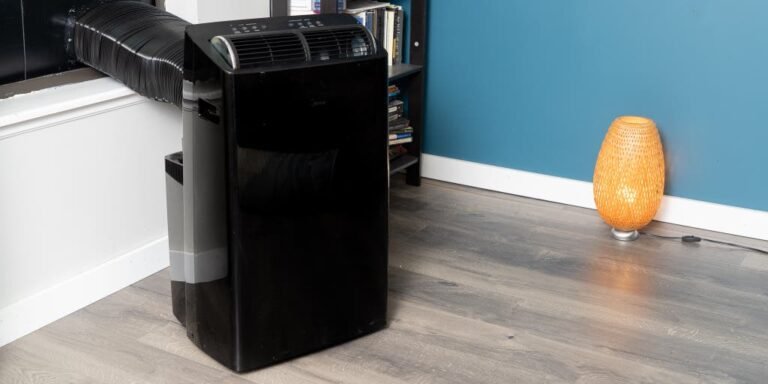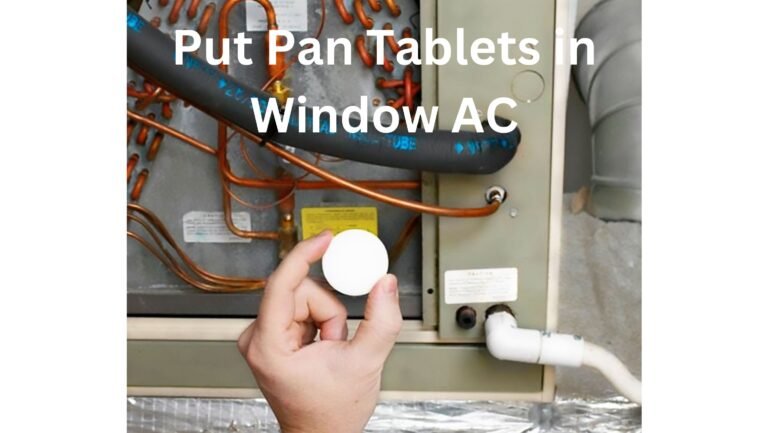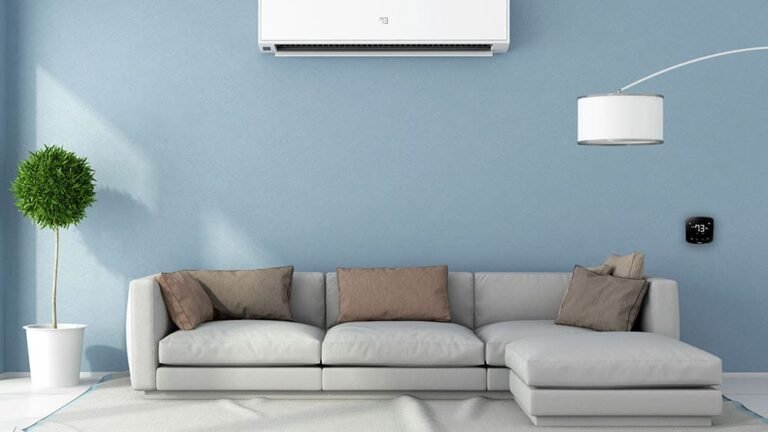Do All Portable Air Conditioners Have to Be Vented Out a Window? The Essential Guide
All portable air conditioners must be vented out a window in order to properly cool a room.
Do Portable Air Conditioners Need Window Venting?
| Do Portable Air Conditioners Need Window Venting? |
| Ventilation requirements for portable air conditioners |
| While portable air conditioners offer the convenience of being able to cool different rooms without the need for permanent installation, they still require proper ventilation to function effectively. Venting is essential for portable air conditioners as it allows the unit to expel hot air and moisture from the room. Most portable air conditioners come with an exhaust hose that needs to be connected to a window kit or an opening in a wall. This hose serves as an outlet for the hot air generated by the air conditioner. Without proper venting, the hot air will remain trapped in the room, reducing the cooling efficiency of the unit and potentially damaging the compressor. It is important to note that while there are some vent-free portable air conditioners available, they are typically less efficient and can lead to increased humidity levels in the room. Therefore, if you want your portable air conditioner to perform optimally and provide effective cooling, proper venting through a window or alternative venting method is crucial. |
Can You Run A Portable Air Conditioner Without Venting?
| Can you run a portable air conditioner without venting? |
| The counterproductiveness of operating a portable AC without venting |
Can you run a portable air conditioner without venting it outside? Although it isn’t unsafe to run your portable AC without venting, it is counterproductive. You should only operate it without an exhaust hose in dehumidifier mode; however, this will only heat the room up, not cool it down. Portable air conditioners need to be vented in order to remove the hot air they produce. Venting is necessary to maintain the efficiency of the unit and prevent overheating. Without proper venting, the portable AC will not be able to cool the room effectively and may even lead to increased heat inside. So, it is highly recommended to ensure proper venting for your portable air conditioner to work efficiently and provide the desired cooling effect.
Can I use a portable air conditioner in a room without window access? For portable ACs to work properly, adequate ventilation must be crucial in spaces without windows. You have a few choices, like employing a drop ceiling, sliding glass door, or a dryer vent. Keep reading for a thorough explanation of how to vent your portable AC unit without a window.
How To Vent A Portable Air Conditioner Without A Window
It is recommended to vent a portable air conditioner out a window to effectively remove hot air and humidity from the room. However, if you don’t have access to a window, there are alternative options available. One option is to use a drop ceiling for venting. By connecting the exhaust hose to a drop ceiling vent, you can redirect the hot air out of the room. Another option is to use a sliding glass door. You can install a temporary venting kit that allows the exhaust hose to be attached to the sliding door while still allowing it to open and close. Lastly, if you have a dryer vent in the space, you can utilize it for venting the portable air conditioner. Make sure to check the compatibility and safety guidelines before using this option.

Credit: cielowigle.com
Installing A Portable Air Conditioner In A Casement Window
Installing a Portable Air Conditioner in a Casement Window
Installing a portable air conditioner in a casement window can be done by following a step-by-step guide:
- Remove the pipe: Start by removing any existing pipe or hose connected to the air conditioner.
- Install the seal on the inside: Use a seal or weatherstripping material to create an airtight seal around the casement window.
- Measure the window frame: Take measurements of the window frame to ensure a proper fit for the air conditioner unit.
- Clean the frame: Thoroughly clean the window frame to ensure the adhesive tape will stick properly.
- Apply velcro tape: Apply velcro tape to the window frame, following the manufacturer’s instructions.
- Remove window seal material: If there is any existing window seal material, remove it before installing the air conditioner.
By following these steps, you can successfully install a portable air conditioner in a casement window without the need for venting it out.
Ventless Air Conditioners Vs Traditional Portable Air Conditioners
Comparing ventless air conditioners and traditional portable ACs:
Ventless air conditioners, also known as windowless or hoseless air conditioners, offer a unique solution for cooling spaces without the need for ventilation through a window. The primary benefit of ventless air conditioners is their ease of installation – since there is no need for a window, they can be easily placed anywhere in the room. This makes them an ideal option for rooms without window access.
However, ventless air conditioners do have some drawbacks. Firstly, they may not provide the same level of cooling power as traditional portable ACs. Additionally, ventless ACs tend to be more expensive due to the advanced technology required. Lastly, ventless air conditioners generate moisture and hot air that needs to be vented out of the room using an exhaust hose or alternative venting methods.
Traditional portable air conditioners, on the other hand, require venting through a window using an exhaust hose. While this may be seen as a drawback for some, it allows for more efficient cooling and removes moisture and hot air from the room, creating a comfortable environment. They are generally more affordable and offer a wider range of cooling capacities compared to ventless options.
In conclusion, while ventless air conditioners provide convenience and flexibility in terms of installation, traditional portable ACs offer better cooling performance and value for money. The choice ultimately depends on the specific needs and constraints of the space where the air conditioner will be used.
Key Considerations For Choosing A Portable Air Conditioner
|
Key Considerations for Choosing a Portable Air Conditioner When choosing a portable air conditioner, there are several key considerations to keep in mind. These include:
By considering these factors, you can make an informed decision when choosing a portable air conditioner that suits your needs and preferences. |
Frequently Asked Questions Of Do All Portable Air Conditioners Have To Be Vented Out A Window
Can You Run A Portable Air Conditioner Without Venting It Outside?
Running a portable air conditioner without venting it outside is not recommended because it only heats up the room, rather than cooling it down.
Can I Use A Portable Air Conditioner In A Room Without Window Access?
Yes, a portable air conditioner can be used in a room without window access. However, it is important to ensure adequate ventilation through alternatives such as a drop ceiling, sliding glass door, or a dryer vent. Operating the portable AC without proper ventilation will only heat up the room instead of cooling it down.
What Happens If You Don T Vent A Portable Air Conditioner Out The Window?
Venting a portable air conditioner out the window is important to remove the heat generated by the AC. If you don’t vent it, the room will only heat up instead of cooling down.
Can I Vent An Air Conditioner Without Window?
No, you cannot vent an air conditioner without a window. Ventilation is necessary to remove heat from the room.
Q1: Can I Use A Portable Air Conditioner In A Room Without Window Access?
A1: For proper operation, portable ACs require adequate ventilation. Learn alternative venting options in this blog post.
Q2: What Happens If You Don’T Vent A Portable Air Conditioner Out The Window?
A2: Without venting, the room will only heat up from the AC’s operation. Discover why venting is crucial in our blog.
Q3: How Can I Vent A Portable Air Conditioner Without A Window?
A3: Explore creative solutions like drop ceilings, sliding glass doors, or dryer vents in our comprehensive guide.
Q4: Is It Safe To Run A Portable Ac Without Venting It Outside?
A4: Although not unsafe, running your portable AC without venting is counterproductive. Learn more in our article.
Q5: Can Portable Air Conditioners Be Vented Through A Casement Crank Window?
A5: Find out how to effectively vent your portable air conditioner through a casement crank window in our step-by-step guide.
Q6: How To Install A Portable Air Conditioner In A Casement Window?
A6: Follow our detailed instructions to properly install a portable air conditioner in a casement window.
Conclusion
To effectively cool a room, portable air conditioners need to be vented outside. Although it may seem tempting to run a portable AC without venting, it is counterproductive and can actually heat up the room instead of cooling it down.
Not to worry if you don’t have a window available, as there are alternative venting options. You can consider using a drop ceiling, a sliding glass door, or even a dryer vent to properly ventilate the unit. It is essential to ensure adequate ventilation for the portable AC to work efficiently.
Venting the unit allows the heat to be expelled outdoors, preventing the room from getting hotter. So, while it may be possible to run a portable AC without venting, it is not advisable if you want to enjoy the cooling benefits it provides.
Don’t let the lack of a window stop you from using a portable air conditioner – explore different venting options and stay cool all summer long.






